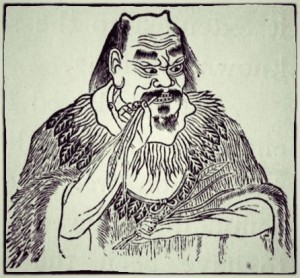Category: Warm, Acrid Herbs that Release the Exterior
Taste: Acrid, Slightly Bitter Temperature: WarmChannels entered: Lung, Bladder
Dosage: 2-9g
Key Characteristics:
- Induces sweating
- Calms wheezing
- Promotes urination
Cautions & Contraindications:
- Dosage should not be too large as this herb has a strong effect.
- Should never be used alone.
- Not for those who are debilitated, experiencing spontaneous sweating from exterior deficiency or night sweats from yin deficiency.
- Caution in patients with hypertension and during pregnancy.
Actions & Indications:
- Induces sweating and releases the exterior: for patterns of Tai Yang cold damage with chills, fever, headache, absence of sweating, and a tight floating pulse. Opens the pores and interstices to release the exterior.
- Disseminates and facilitates the Lung qi, calms wheezing, and stops coughing: for cough and wheezing due to wind-cold obstructing the Lungs. Encourages Lung qi to flow more easily, and directs it downward. Indicated for either externally-contracted or internally-generated patterns.
- Promotes urination and reduces edema: especially for edema that accompanies an exterior condition.
- Warms and disperses cold pathogens: useful for wind-damp painful obstruction and deep-rooted toxic sores without a head.
Combinations:
- Gui Zhi: wind-cold exterior excess with fever and chills but not sweating, especially with body aches. Gui Zhi enhances the diaphoretic action. This combination is also used for Wind-Cold-Damp Bi.
- Xing Ren: Wind-Cold cough and wheezing.
- Shi Gao: cough from heat obstructing the lungs with wheezing and nasal flaring. Often more effective when used with Huang Qin and Sang Bai Pi.
- Ren Shen: for wind wind-cold where there is underlying primal qi deficiency.
- Bai Zhu: acute onset edema. Often used with Fu Ling Pi and Sang Bai Pi.
- Zhi Fu Zi: wind-cold bi or exterior cold conditions and edema associated with yang deficiency.
- Shu Di Huang: deep-rooted toxic sores without a head caused by cold-damp obstructing the channels. Also for cough and wheeze associated with Kidney yin deficiency.
Formulas:
- Ma Huang Tang (ephedrae decoction)
- Xiao Qing Long Tang (minor bluegreen dragon decoction)
- San Ao Tang (three unbinding decoction)
- Ma Xing Shi Gan Tang (ephedrae, apricot kernel, gypsum, and licorice decoction)
- Yue Bi Jia Zhu Tang (maidservent from Yue decoction +atracylodes)
- Yang He Tang (yang heartening decoction)
Notes:
- Ma Huang is strongly acrid, dispersing and warm. It enters the Bladder and Lung, both of which are associated with the exterior, and enters both the channels and the organs.
- Disperses the exterior, opening the interstices and pores to induce sweat and drive out pathogens.
- Opens the Lung to disseminate and facilitate Lung qi, thereby alleviating cough and wheeze. Ma Huang is a bronchiodilator.
- Can be used to expel cold or cold-damp pathogens to treat Bi Syndrome or deep-rooted toxic sores, both of which are local accumulations of cold and damp. Specifically, Ma Huang is used to treat yin sores which are white, sunken, possibly hollow, and not open to the surface.
- Especially useful for edema in the lower legs and abdomen. When edema occurs with an external invasion, 2 to 3 days of Ma Huang Tang may be used.
- Ma Huang has a downward direction.
- Raises blood pressure and stimulates the nervous system.
- Ma Huang can be added to external medicines to open the pores and allow faster absorption.
- Ma Huang Gen (Ephedrae Radix) can treat overdose or poor reaction to Ma Huang. Ma Huang overdose leading to excessive sweating may also be treated by taking Gan Cao (30g)and Lou Dou (15g) in a congee.
- Combine with Huang Qin to prevent red eyes.
- The foam produced from cooking can cause irritability and should be removed.
- Has antibiotic effect on Staph and Strep infections.
- Possible substitutes include Fang Feng, Bai Qian, Bai Guo, and Di Long.



